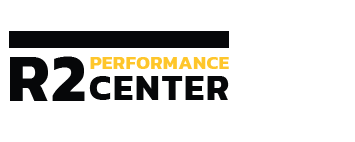5 Ways to Manage Emotions for Optimal Performance
By Ajala Baker, Performance Expert
Performance Optimization is not just about physical fitness and strength; it’s also about mental fitness and readiness. Your emotional state plays a direct role in your ability to act with control and accuracy, whether you are preparing to fire a weapon, execute a tactical movement or maintain precision under pressure. Emotional regulation gives you a mental edge, helping you to upregulate or downregulate your emotions to match the demands at hand to perform optimally.
Proactive activating event, thoughts, consequences: Regulate before it escalates
The proactive ATC model allows you to take control of your internal responses before your emotions interfere with your optimal performance. ATC stands for:
- Activating event: What is about to happen?
- Thoughts: What are you telling yourself about what is about to happen?
- Consequences: How will those thoughts about the impending event affect how you feel and behave (perform)?
Instead of letting your reaction happen on autopilot, you can take charge by being proactive and identifying what is happening inside of you and where it is taking you emotionally and behaviorally.
This is where upregulation and downregulation of emotions come into play.
- In instances that require energy and drive, such as a physical challenge like a ruck march or combat-related event, upregulation can boost your motivation and intensity to help you achieve optimal performance.
- When the mission demands calm and precision, like during marksmanship, medical procedures or de-escalation tasks, downregulation can help lower your arousal levels, restoring your focus and fine motor control.
Proactive ATC allows you to slow down and develop the awareness to recognize these emotional changes early. It is up to you to choose the best regulation strategy to maximize your performance in real time for an optimal result.
5 ways to manage emotions for a more optimal performance
According to James Gross’s emotion regulation model, we can control our emotions by altering our thoughts or behaviors before (known as antecedent-focused strategies) or after feelings occur (known as response-focused strategies).
The model consists of five steps.
- Pick the situation: Stay away from situations that upset you and instead find environments or people who make you feel good.
- Change the situation: If you are unable to avoid a situation or environment, figure out how to improve it or make it more enjoyable.
- Pay attention differently: Focus on what keeps you composed, rather than on what upsets you.
- Change how you think about it (reappraisal): Don’t think, “This is bad,” but, “This is a challenge I can handle.”
- Control your reaction (suppression): If you sense a big emotion building up, try to calm your body down with deliberate breathing, or stop yourself from acting right away by reframing your thinking.
To perform optimally under any circumstance, Soldiers must be able to maintain their composure, energy and sharpness— something they can do if they learn and continually practice emotional regulation. A foundational part of performance optimization is knowing and regulating your emotions. When you can control your emotions, you can control the moment at hand.
Train your mind like you train your body: with intention, discipline and purpose.
Contact your local R2 Performance Center to schedule training that can boost your mental and physical performance.


